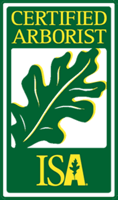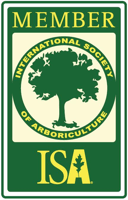The signs of a sick tree are often obvious; however, it’s common for the early stages of decaying trees to go unnoticed. It isn’t always clear when trees are sick and in poor health. Leaves not growing, missing bark, growth of mushrooms, and dry, brittle branches are a few of the many signs of a sick tree.
The earlier you spot a sick or decaying tree, the better — the tricky part is figuring out what’s wrong with it. Our certified arborists in South Florida are here to share more about treating a sick tree and the signs of a sick tree.
Signs of a Sick Tree
Trees are pretty resilient, but just like humans, they can become sick. If you are unsure if your trees are ill, check out these signs of a sick tree.
1. Examine the Roots
Start by looking from the ground up. Examine the roots to determine if there are severed roots, and check for signs of fungal growth, such as mushrooms.
2. Review the Root Collar
Observe the tree trunk and the root collar, which is the part of the trunk right above the soil. Look out for any peeling or bark that appears loose. Your tree might be sick if it has any cracks or splits.
3. Investigate the Trunk
Your tree’s trunk might be at risk for illness if there is any sign of decay. Make sure you are checking your tree for any signs of swelling. The swelling might appear as a bulge, which is the tree’s reaction to irritation. Your tree might also be sick if the trunk has any cavities, small holes, or soft, decaying wood.
4. Observe the Canopy
One of the biggest signs of a sick tree is dead branches. Observe the canopy and search for any branches that appear to be dying. Dead or dying branches will have no leaves and a lack of bark. Review the branch unions for any branches that have two branches that have grown together, similar to hair split ends.
5. Monitor the Leaves
Look for deformation, discoloration, spots, or holes in your leaves. Sick trees are known for having wilted leaves that are discolored. Your tree might be sick if the leaves fail to appear between seasons. During the spring, trees tend to bloom. If your tree is lacking growth and is missing leaves, then you might have a sick tree. Make sure your branches have ample leaves and are growing properly.
How to Treat a Sick Tree
Your sick trees need to be treated properly to ensure they are nursed back to life. It’s important you aren’t putting weed fertilizer near the tree’s roots. The weed fertilizer on the grass can affect the health of the tree. You also don’t want to suffocate the trunk by applying too much mulch near it. The wood can become rotted if there is not enough breathing room, and it can also attract insects.
Hand-trim any exposed roots instead of using anything sharp like a lawnmower, which can potentially be damaging. Make sure you aren’t under or overwatering the tree. As your tree grows, the roots move upward in search of hydration. It’s also crucial you are practicing proper tree pruning to maintain your trees’ structure. If you cut the wrong leaves, the tree is more susceptible to illnesses.
Choose Our Certified Arborists
Tree owners are often concerned with the health of their trees. It’s okay if you are unsure how to determine if your tree is sick. With our total plant health care program, your trees will be in the right hands. Take care of your trees with the help of Zimmerman Tree Service. Contact us today to nurse your trees back to health.
Related Readings





